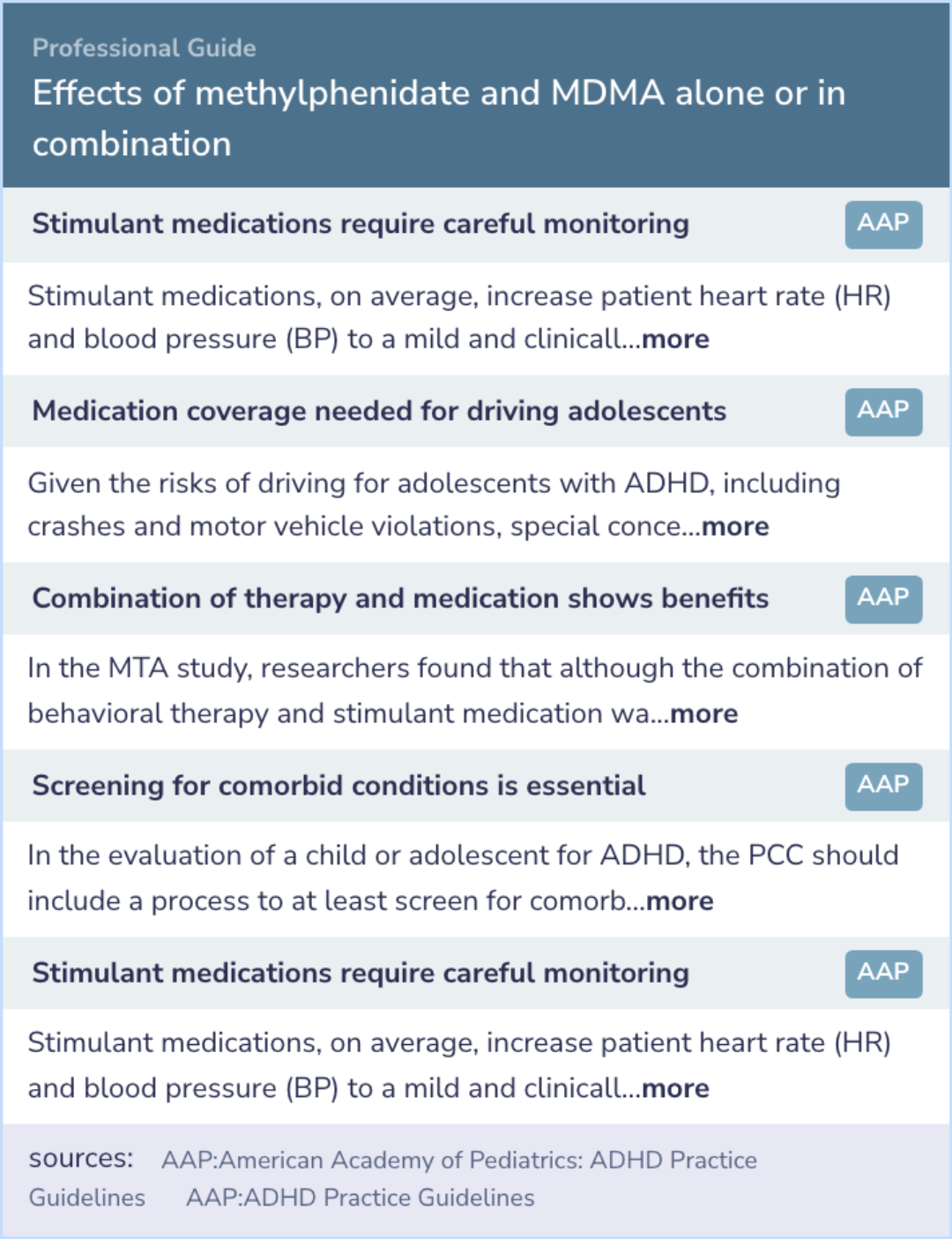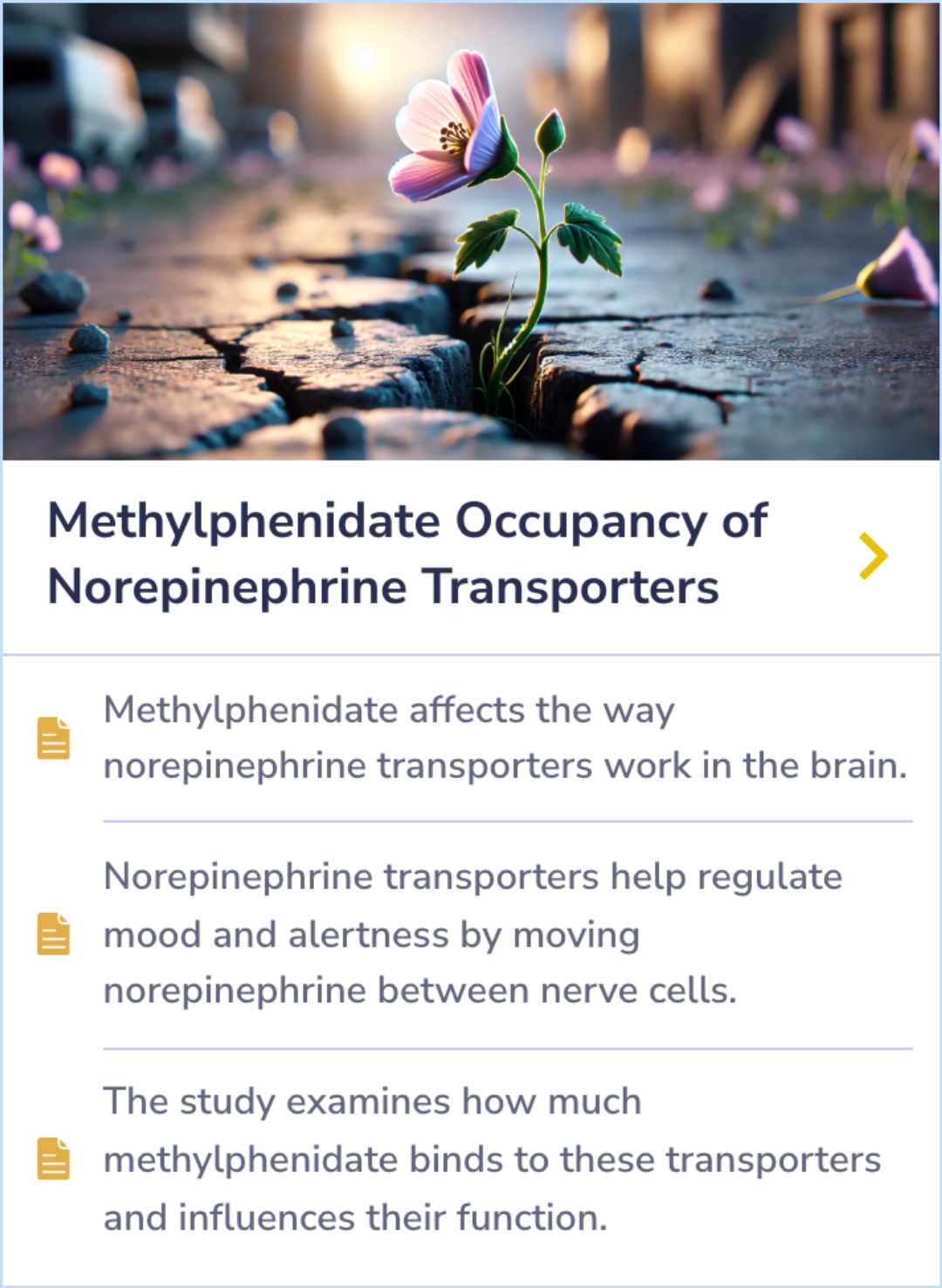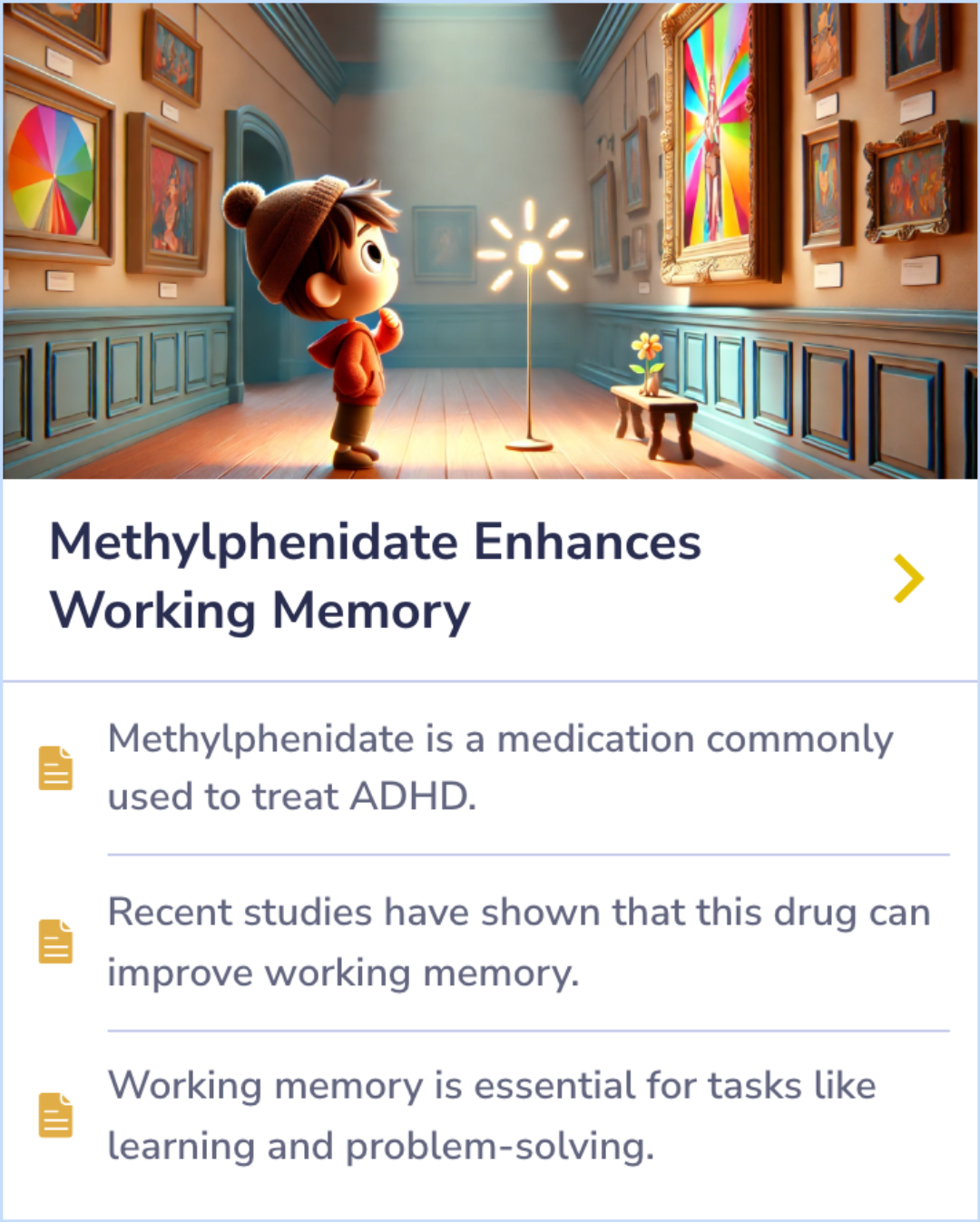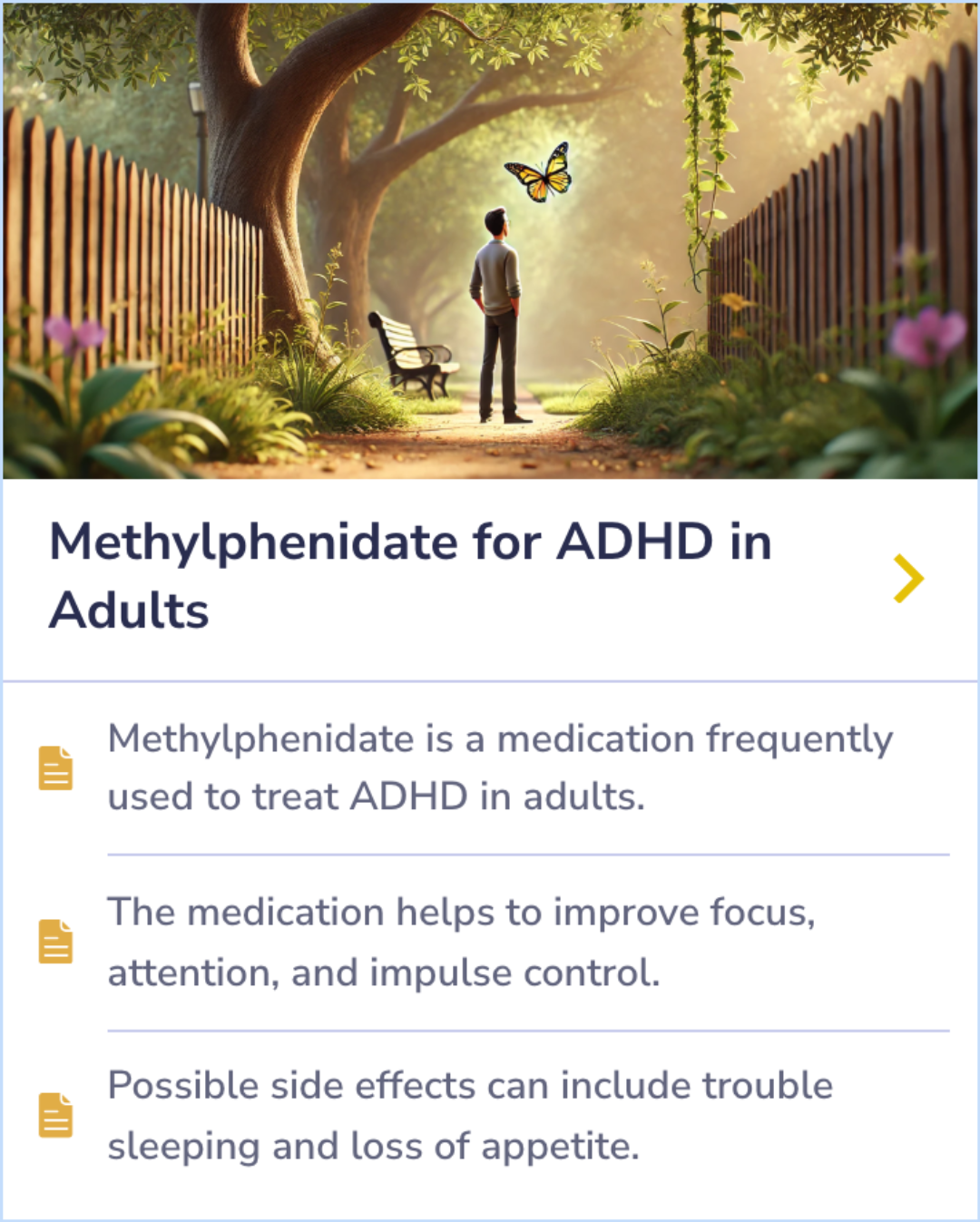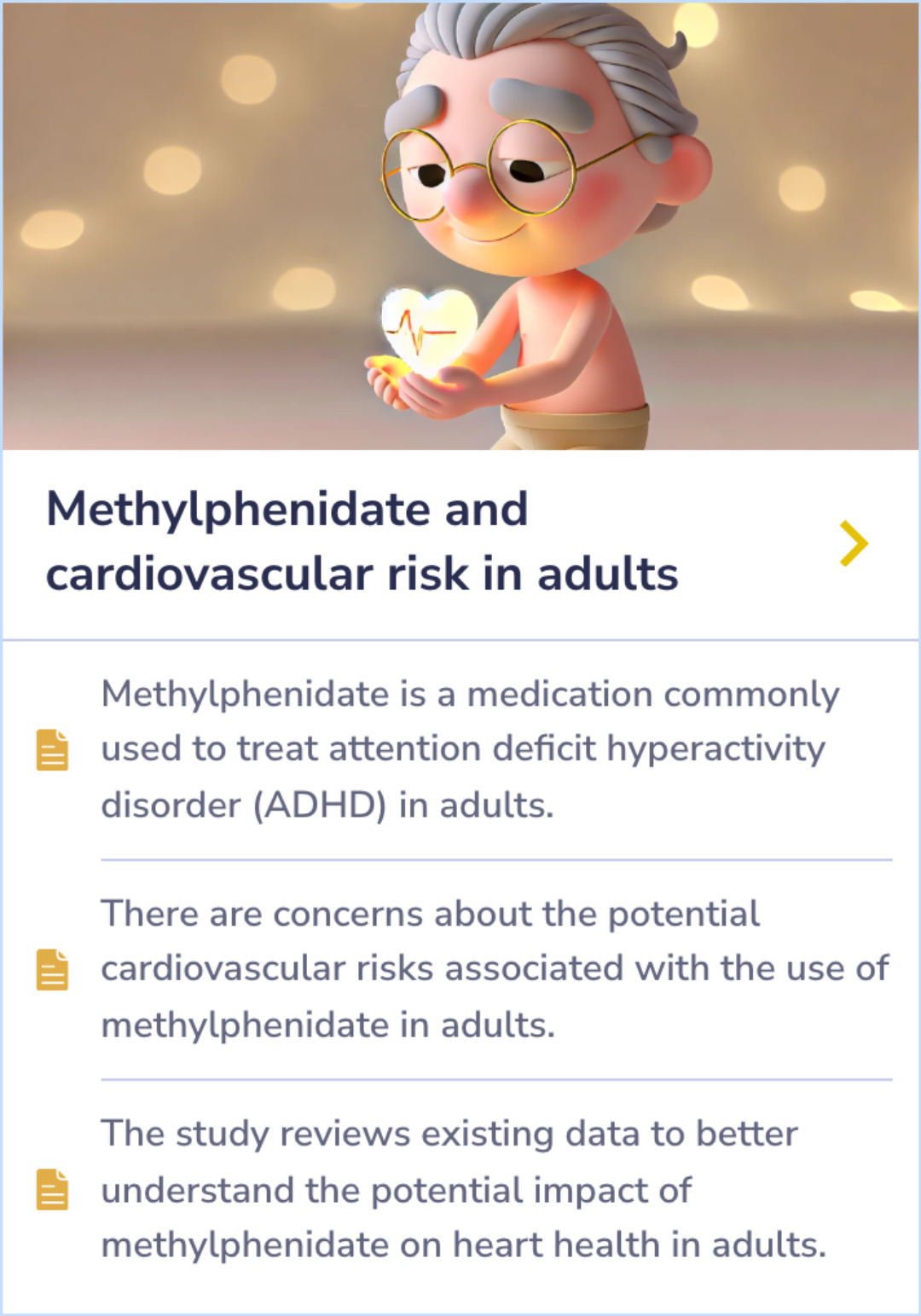Ritalin Paper Database
Visual Abstract
Pharmacokinetic and pharmacodynamic effects of methylphenidate and MDMA administered alone or in combination
Effects of methylphenidate and MDMA alone or in combination
September 4, 2024
author
Hysek CM, Simmler LD, Schillinger N, Meyer N, Schmid Y, Donzelli M, Grouzmann E, Liechti ME
journal
Int J Neuropsychopharmacol
Date Published
2014 Mar
Why link to a visual abstract?
What is a visual abstract?
Original
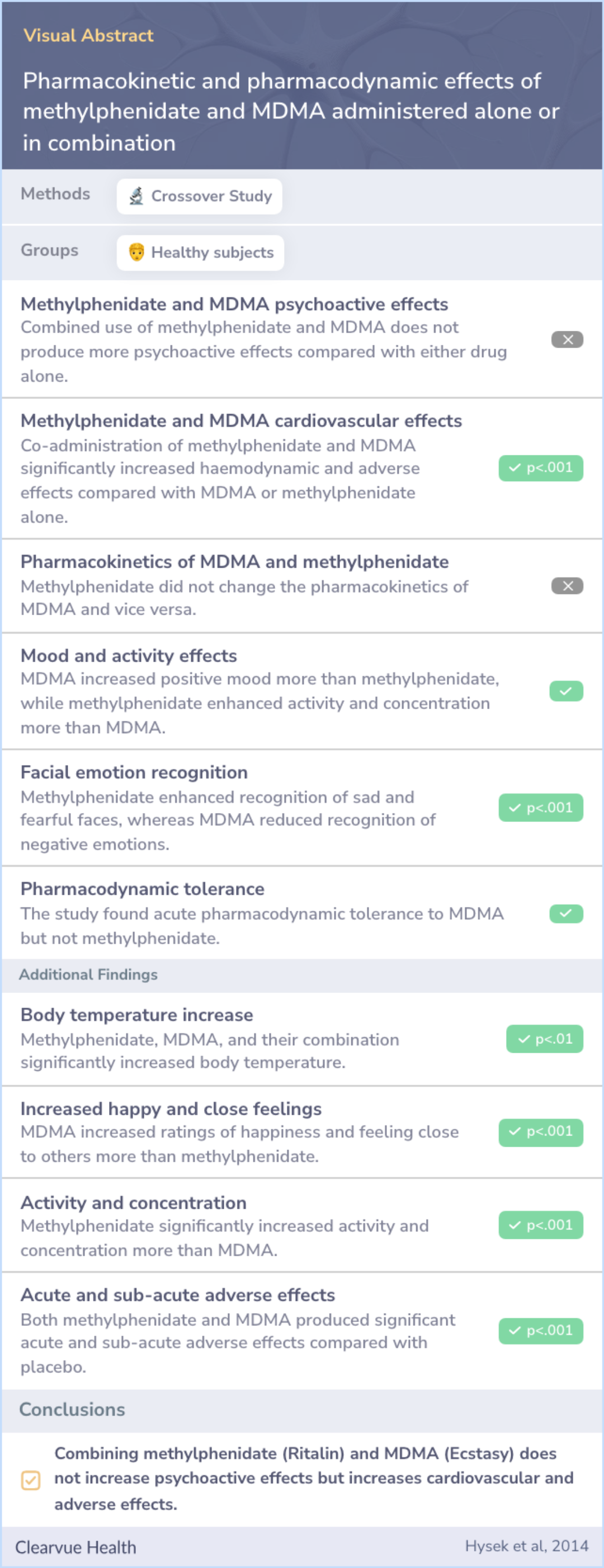
Study Summary
🔬
What They Studied
The main research question was to compare the pharmacodynamic and pharmacokinetic effects of methylphenidate (Ritalin) and MDMA (Ecstasy) taken alone and in combination.
💡
What They Found
They found that methylphenidate (Ritalin) did not enhance the psychotropic effects of MDMA (Ecstasy), but combined use significantly increased cardiovascular and adverse effects.
📚
What This Means
These findings indicate that while combining methylphenidate (Ritalin) and MDMA (Ecstasy) does not boost psychoactive effects, it does raise the risk of cardiovascular issues and other adverse effects.
Study Summary
Study Overview
The researchers wanted to understand how methylphenidate (often known as Ritalin) interacts with MDMA (commonly known as Ecstasy). They hoped that methylphenidate would reduce the effects of MDMA, making it less intense. People often misuse both drugs, so it's important to know if combining them would be safe or dangerous. They specifically looked at the emotional, bodily, and hormonal effects of the drugs on the same individuals to get a clear picture.
The study found some interesting and important results. While methylphenidate didn't make the effects of MDMA stronger, it also didn't reduce them as the researchers had hoped. Instead, combining these drugs led to increased heart-related and other negative effects. This means that using both together could be more dangerous for the body, even though it doesn't change how the mind feels. These results highlight the risks involved in mixing these substances and can help inform safer practices and future research in this area.
The study found some interesting and important results. While methylphenidate didn't make the effects of MDMA stronger, it also didn't reduce them as the researchers had hoped. Instead, combining these drugs led to increased heart-related and other negative effects. This means that using both together could be more dangerous for the body, even though it doesn't change how the mind feels. These results highlight the risks involved in mixing these substances and can help inform safer practices and future research in this area.
Abstract: background
Methylphenidate and 3,4-methylenedioxymethamphetamine (MDMA, 'ecstasy') are widely misused psychoactive drugs. Methylphenidate increases brain dopamine and norepinephrine levels by blocking the presynaptic reuptake transporters. MDMA releases seroton...more

Hypothesized Effects
"Methylphenidate did not attenuate the pharmacodynamic effects of MDMA as we originally hypothesized it should."
Psychoactive Effects
"Methylphenidate did not enhance any of the psychotropic effects of MDMA, although methylphenidate produced considerable subjective effects on its own."
Safety Perspective
"From a safety or recreational use perspective, the findings overall indicate that the combined use of methylphenidate and MDMA would not result in additional psychoactive effects compared with MDMA alone, but such a combination would enhance cardiovascular and adverse effects."
Study Summary
Methods
This study was conducted using a double-blind, placebo-controlled, crossover design with healthy subjects. This means neither the participants nor the researchers knew who was receiving which treatment during the trials, which helps to reduce bias. The subjects received either methylphenidate (Ritalin), MDMA (ecstasy), a combination of both, or a placebo at different times. The researchers measured various effects, including psychotropic (mind-altering), haemodynamic (blood flow-related), and adverse (negative) effects. They also examined how each drug affected the others' presence and action in the body, which is referred to as pharmacokinetics.
Abstract: methods
This study compared the pharmacodynamic and pharmacokinetic effects of methylphenidate and MDMA administered alone or in combination in healthy subjects using a double-blind, placebo-controlled, crossover design.

Study Summary
Results
The study found that methylphenidate (Ritalin) did not increase the psychotropic effects of MDMA (ecstasy), although it did produce its own psychostimulant effects. However, when the two drugs were taken together, there were significantly higher haemodynamic and adverse effects compared to taking either drug alone. This means the combination of drugs caused more noticeable changes in blood flow and more negative side effects. Additionally, methylphenidate and MDMA affected how participants recognized facial emotions differently. Methylphenidate improved the recognition of sad and fearful faces, while MDMA reduced the recognition of negative emotions.
Abstract: results
Methylphenidate did not enhance the psychotropic effects of MDMA, although it produced psychostimulant effects on its own. The haemodynamic and adverse effects of co-administration of methylphenidate and MDMA were significantly higher compared with M...more

Study Summary
Conclusions
In conclusion, taking methylphenidate (Ritalin) with MDMA (ecstasy) does not result in stronger psychoactive effects than taking either drug alone. However, combining these drugs increases cardiovascular risks and other adverse effects. The study highlights the potential dangers of using these psychostimulants together, particularly regarding their impact on heart function and the recognition of emotions. These findings are important for understanding the risks of combined drug misuse and could inform clinical assessments and warnings about the dangers of mixing these substances.
Abstract: conclusions
In conclusion, the combined use of methylphenidate and MDMA does not produce more psychoactive effects compared with either drug alone, but potentially enhances cardiovascular and adverse effects. The findings may be of clinical importance for assess...more
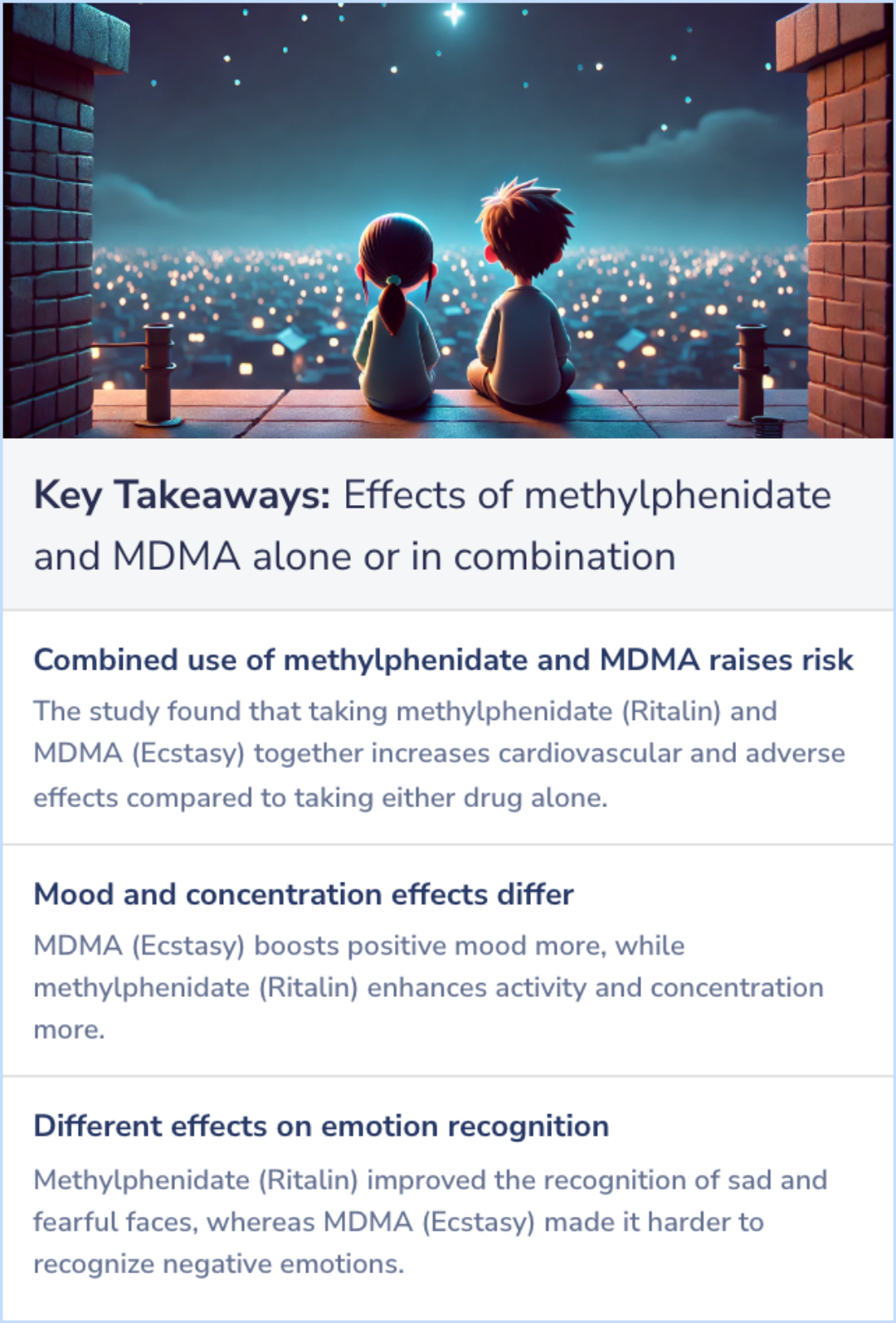
Background Information
Patient Guide
🧠
Methylphenidate Mechanism of Action
Blocks the reuptake of norepinephrine and dopamine, increasing their concentration in the synaptic cleft.
👨⚕️
Primary Uses of Methylphenidate
FDA-approved for treating ADHD in children and adults and as a second-line treatment for narcolepsy.
❤️
Cardiovascular Risks of Methylphenidate
Can exacerbate symptoms like palpitations and is not recommended for those with serious heart conditions.
🧠
Psychiatric Risks
May aggravate symptoms of psychosis or bipolar disorder and can cause new or worsened aggressive behavior.
🚨
Abuse Potential
Due to its Schedule II classification, monitoring for signs of abuse and dependence is critical.
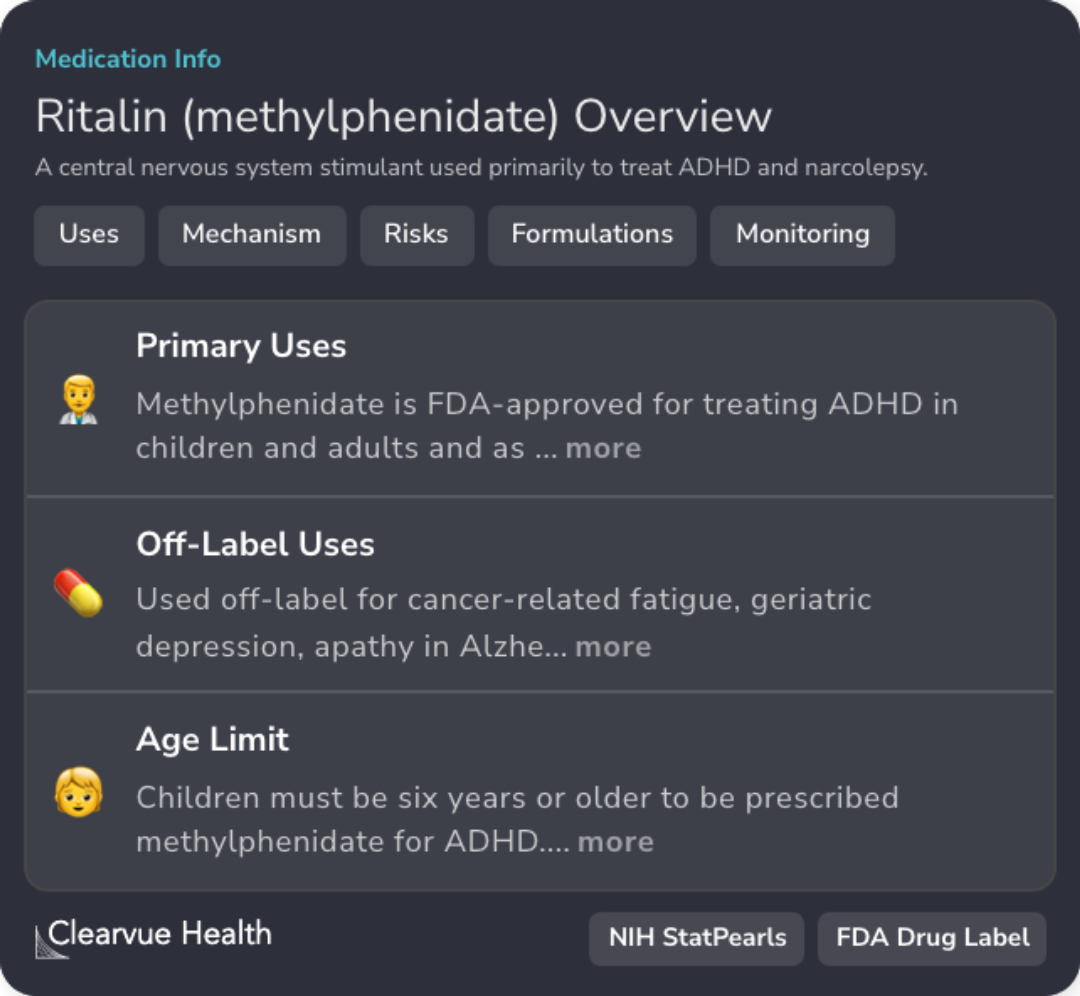
Professional Guide
Expert Opinion: Effects of methylphenidate and MDMA alone or in combination
The study's findings shed light on the significant effects of combining methylphenidate and MDMA, particularly concerning cardiovascular and adverse effects. Consistent with these findings, current professional recommendations highlight the importance of careful monitoring when using stimulant medications due to potential increases in heart rate and blood pressure in a subset of individuals. Screening for comorbid conditions is also emphasized during ADHD evaluations, ensuring that emotional, behavioral, developmental, and physical conditions are addressed. Methylphenidate remains the first-line treatment for preschool-aged children, reinforcing the need for evidence-based approaches in this age group. Moreover, incorporating behavioral therapy with medication shows enhanced benefits for pre-adolescent children, aligning with the intended comprehensive care strategies. Finally, special concern for medication coverage while driving is critical for adolescents with ADHD, reflecting the recognized risks associated with this activity.
Evidence Summary
Methylphenidate's Interaction with Norepinephrine Transporters
Methylphenidate changes norepinephrine transporter function in the brain, impacting mood and alertness. Norepinephrine transporters regulate these states by moving norepinephrine between nerve cells. This study looks at how methylphenidate binds to these transporters and its influence on their activity.
Evidence Summary
Methylphenidate's Impact on Working Memory
Methylphenidate, a medication often prescribed for ADHD, also boosts working memory. This improvement in working memory aids in learning and problem-solving. Highlighting recent studies, it shows that beyond ADHD treatment, methylphenidate has other cognitive benefits.
Working memory is important for various tasks, and methylphenidate helps enhance this function, showcasing its broader potential advantages.
Working memory is important for various tasks, and methylphenidate helps enhance this function, showcasing its broader potential advantages.
Evidence Summary
Understanding Methylphenidate: Benefits and Side Effects
Methylphenidate is often prescribed to adults for treating ADHD, helping boost focus and manage impulsivity. It can improve attention and impulse control, though it may cause trouble sleeping and reduce appetite. Understanding these side effects is important when considering its use.
Evidence Summary
Methylphenidate and Heart Health in Adults
The article explores whether methylphenidate, a medication for ADHD, poses any cardiovascular risks for adults. It examines existing research to shed light on how this medication might affect the heart health of adult users.
Methylphenidate is a medication commonly used to treat attention deficit hyperactivity disorder (ADHD) in adults. There are concerns about the potential cardiovascular risks associated with the use of methylphenidate in adults.
The study reviews existing data to better understand the potential impact of methylphenidate on heart health in adults.
Methylphenidate is a medication commonly used to treat attention deficit hyperactivity disorder (ADHD) in adults. There are concerns about the potential cardiovascular risks associated with the use of methylphenidate in adults.
The study reviews existing data to better understand the potential impact of methylphenidate on heart health in adults.
